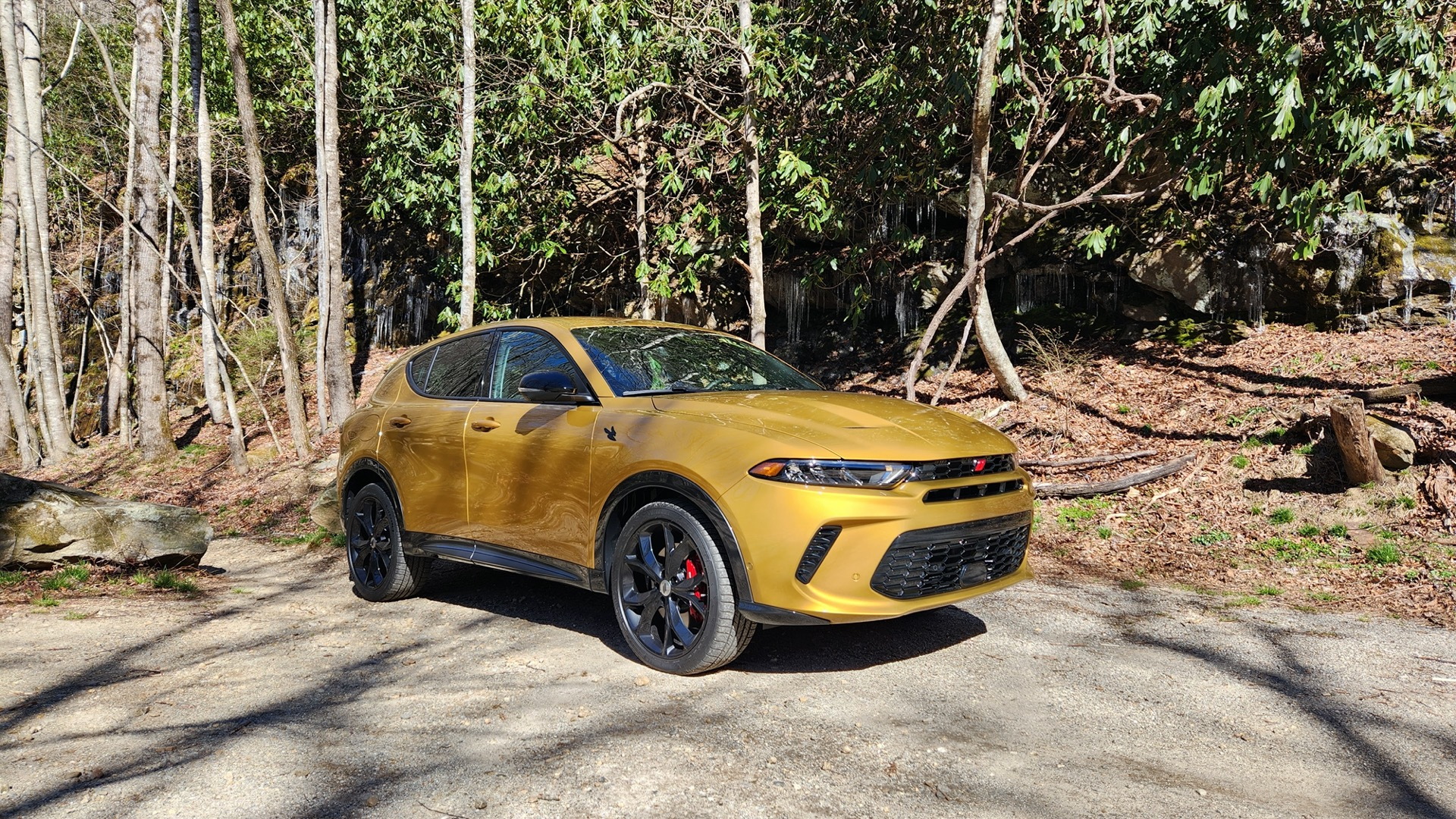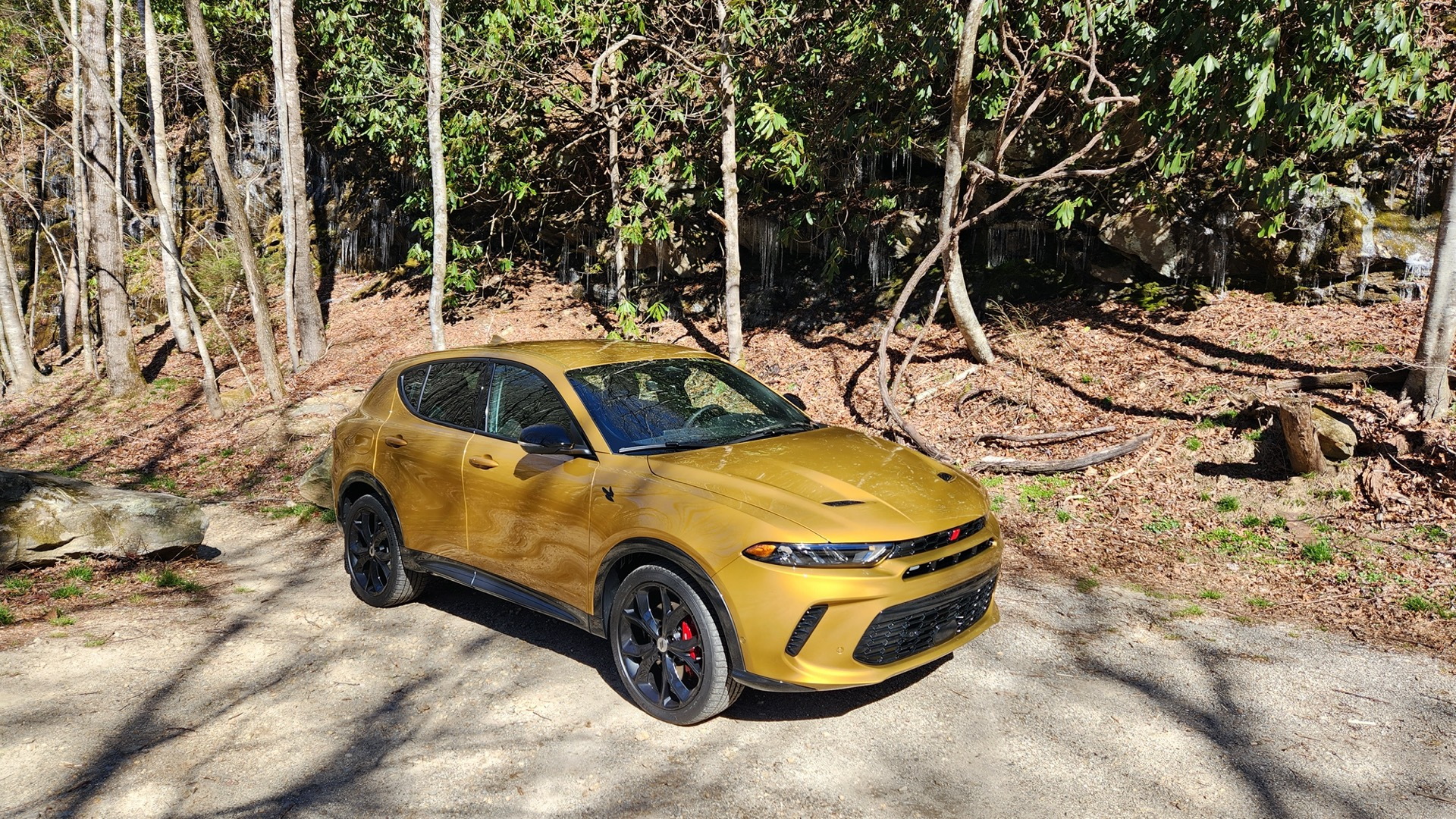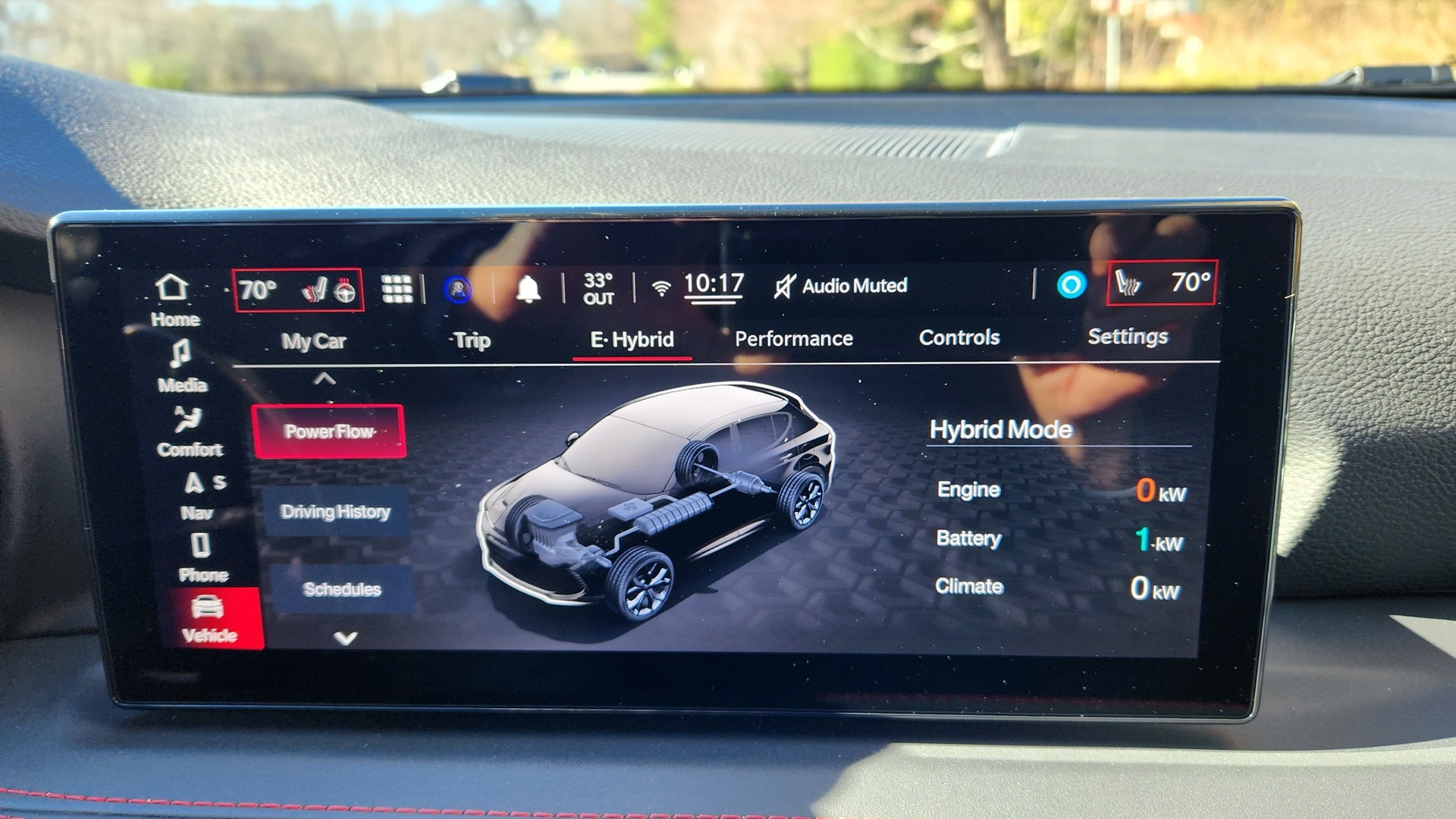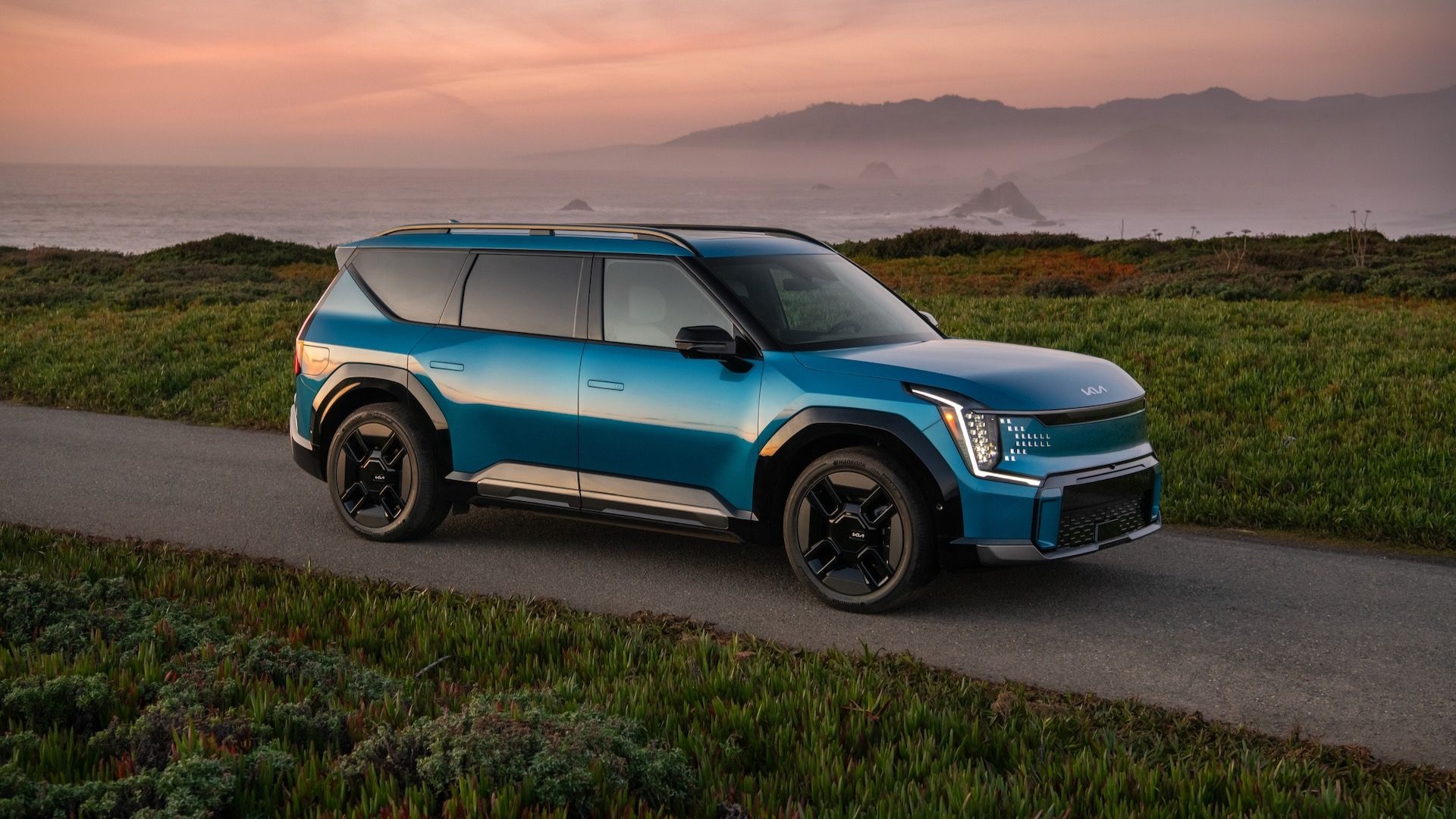The 2024 Dodge Hornet R/T is a small, plug-in hybrid SUV with a mission that has little to do with running on grid electricity, lowering emissions, or saving fuel. Instead, this affordable model from Stellantis’ bad-boy brand has a clear priority: performance. Even if it's nothing close to the noise-making electric muscle car Dodge is to launch next year.
Think PHEV, and you may imagine driving 25 to 50 miles a day on a battery charged from the grid, with a gasoline engine as a backup generator for long trips. It’s a practical solution to going electric much of the time—if it’s plugged in—without the range anxiety of a full EV.
Now, throw away that image entirely, says Dodge. The projected EPA-rated electric range of about 30 miles—and any idea of miles per gallon without a charge—got short shrift during a recent media drive in and around Asheville, North Carolina.
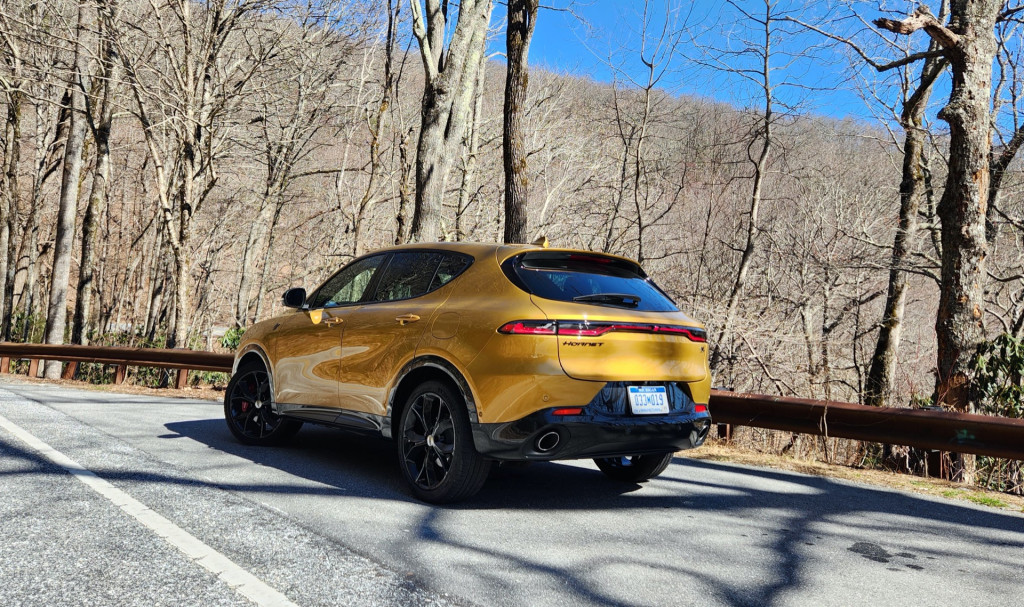
2024 Dodge Hornet R/T
Hornet R/T performance: PowerShots
Instead, Dodge execs focused on the Hornet’s “PowerShot” capability: in Sport mode, pull both steering-wheel paddles, mash the accelerator, and the battery delivers an extra 30 horsepower (22 kilowatts) for up to 15 seconds if its charge level is 80% or higher. A 15-second cooldown period follows before another PowerShot can be delivered.
The result is acceleration from 0 to 60 mph in 5.6 seconds, according to Dodge (with the battery above that 80% threshold). We found ourselves using the PowerShot not just for standing-start acceleration—that gets boring fast—but also passing slow trucks on rural two-lane roads. But the three-step procedure (confirm Sport mode, pull back paddles, mash pedal through detent) was cumbersome enough we wished for the seamless battery power of a full EV.
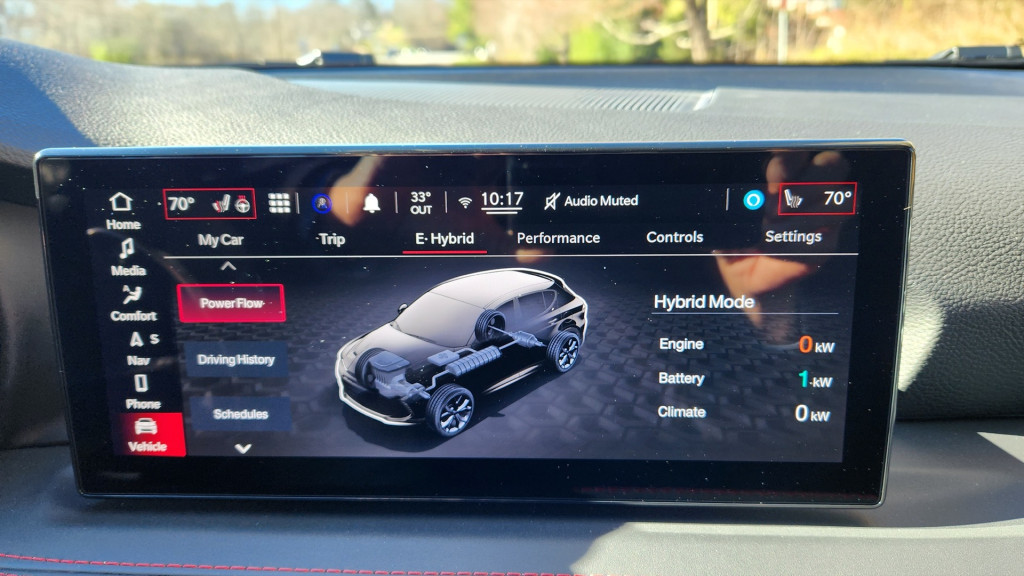
2024 Dodge Hornet R/T
The Hornet R/T’s battery is likely to get quite a lot of exercise. Two of the four drive modes—Sport and e-Save—use the engine not just with the battery but actually to recharge it. Only Hybrid and Electric modes offer any sustained electric running. It’s a different take on a PHEV, about as far from emission-free and carbon reduction as you can get. A few drivers may choose to use the R/T as gently as possible on electricity only, but that’s clearly not what Dodge intends to promote.
All-wheel-drive hybrid propulsion
The Hornet R/T’s 1.3-liter turbo-4 engine has an integrated 44-hp (33-kw) belt starter-generator; Dodge doesn’t cite power for the engine alone. That powerplant drives only the front wheels via a 6-speed automatic transmission. A 90-kw (121-hp) motor powers the rears, making it what’s known as a through-the-road hybrid, with front and rear axles driven by different power sources.
The R/T’s all-wheel drive is provided by software, rather than a driveshaft stretching from a transmission in front to a rear axle. The space freed up in the tunnel houses the long arm of the L-shaped lithium-ion battery pack, with a rated capacity of 15.5 kwh.
This combination of power sources, driven wheels, and drive modes requires a lot of software to manage. From power-up, the Hornet R/T starts in Hybrid mode, gradually using battery charge to run on electricity alone, at light loads or low speeds, then adding engine power for heavier loads. In hilly suburban driving, a Hornet with 40 percent or more battery charge spent a surprising amount of time with its engine off, making it peaceful and smooth.

2024 Dodge Hornet R/T
Hornet R/T drive modes: Sport, Electric, or e-Save?
To go beyond Hybrid mode, the driver must select a different mode, which has to be reset with each ignition cycle. Electric and e-Save are toggled on the steering wheel, while Sport mode is activated via a separate button on the console. Sport is fastest: it keeps the engine on all the time, holds lower gears longer for higher engine output, and frequently draws on battery energy to supplement engine output.
Sport mode also recharges the pack more aggressively than Hybrid or Electric mode, whose regeneration feels minimal unless the brakes are applied. Depending on how it’s driven, Sport mode can slowly boost battery charge—at the cost of more gasoline burned, using the engine as an inefficient generator.
In Electric mode, a Hornet with sufficient battery charge makes a pleasant EV under most driving conditions—though if you mash the pedal to accelerate uphill, the engine will likely kick in to provide more power than the rear-mounted motor can offer.
Finally, there’s e-Save mode, which lets the driver either hold existing battery energy or again use the car to recharge the pack—up to 40, 60, or 80 percent—all selected through the touchscreen.

2024 Dodge Hornet R/T
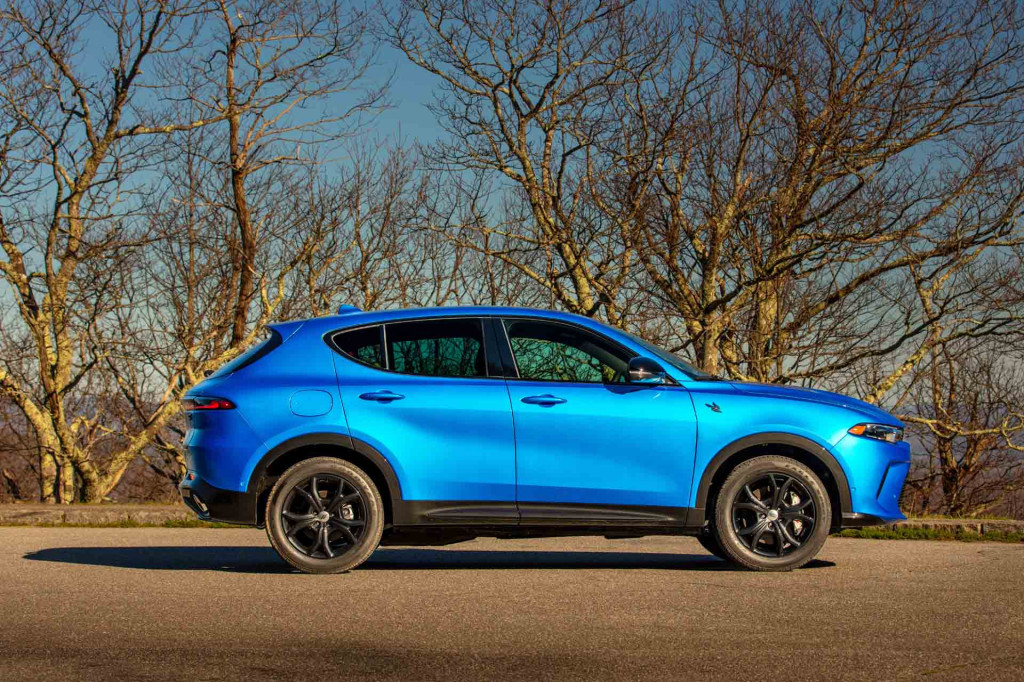
2024 Dodge Hornet R/T
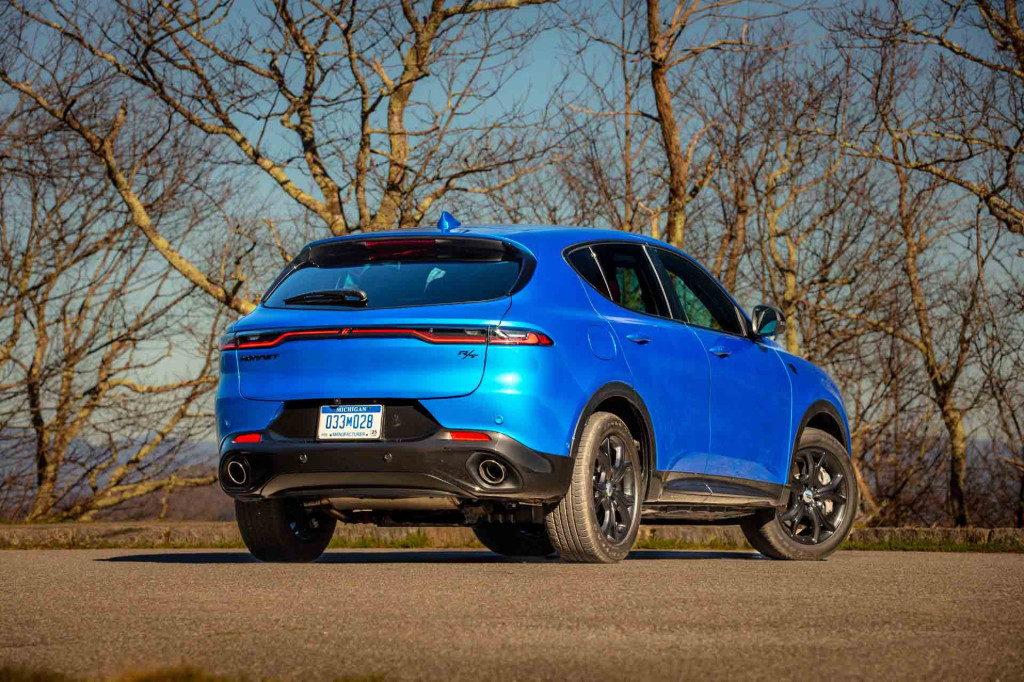
2024 Dodge Hornet R/T
Making sense of Hornet R/T vs other SUVs
On the road, the result is a small performance SUV that can feel quite different depending on the mode and the moment. Across these situations, the Hornet R/T’s handling and roadholding, with its 52:48 front:rear weight distribution, are surefooted, well-balanced, and enjoyable behind the wheel.
The challenge came in the power delivery under heavy driving. On first encounter, it proved unpredictable and occasionally disconcerting. In one case, at steady speed, heading up a grade drew more battery power at first, then a downshift, then another in quick succession—sending the engine soaring from 2,000 to 3,500 and then 5,000 rpm. Noise rose accordingly. Even after a few hours of driving, we couldn’t predict the Sport-mode behavior of the powertrain under most circumstances. With familiarity, perhaps drivers will come to know when engine revs will soar, when the rear motor will add a surge of torque, and when the 6-speed transmission will downshift.

2024 Dodge Hornet R/T

2024 Dodge Hornet R/T

2024 Dodge Hornet R/T
Considering its edgy driving impressions and overall packaging, there aren’t any obvious, direct rivals for the Hornet R/T unless you shift to non-hybrid models like the Mazda CX-30 Turbo or Kia Seltos SX Turbo.
The interior fits four adults comfortably, with enough headroom and legroom for a 6-foot passenger to sit behind a 6-foot driver on the slightly elevated rear seat over the battery pack. Outward vision is only average, but tossing the little crossover around curvy back roads was a fun way to spend the afternoon.
Hornet R/T pricing and incentives
The 2024 Dodge Hornet R/T carries a recommended starting price of $41,590, which includes a mandatory $1,595 destination fee. The R/T Plus adds $5,000 to that total. Then there are option packs: Blacktop, Track Pack, and Tech Pack. A fully loaded R/T can hit $50,000.
Dodge did suggest that Hornet R/Ts that are leased rather than purchased will qualify for the full $7,500 federal incentive, per the latest changes in IRS interpretations of the Inflation Reduction Act signed last August.
Those interpretations may still be a work in progress, so check carefully if you intend to lease so as to take advantage of that provision. Various state and local incentives for plug-in hybrids may also apply. ahead of the R/T plug-in hybrid’s late spring arrival. And keep in mind, there’s a 2023 Hornet GT arriving in late April that isn’t a plug-in or a hybrid. (See this full first drive covering the non-hybrid Hornet GT.)

2024 Dodge Hornet R/T
The R/T has a standard 7.4-kw onboard charger, so it will recharge to 100 percent in roughly 2.5 hours using a 240-volt Level 2 station. It takes up to 8 hours on a standard 120-volt household plug. Dodge includes a 120-volt portable charging cable as standard.
This begs a question: Will Dodge Hornets actually get plugged in? Or will the battery and rear motor end up as expensive performance boosters subsidized by purchase and lease incentives? Dodge says it will track the charging behavior of R/T buyers, suitably anonymized. We hope the brand plans to share what it learns in the near future.
Dodge provided airfare, lodging, and meals to enable Green Car Reports to bring you this first-person drive report.
